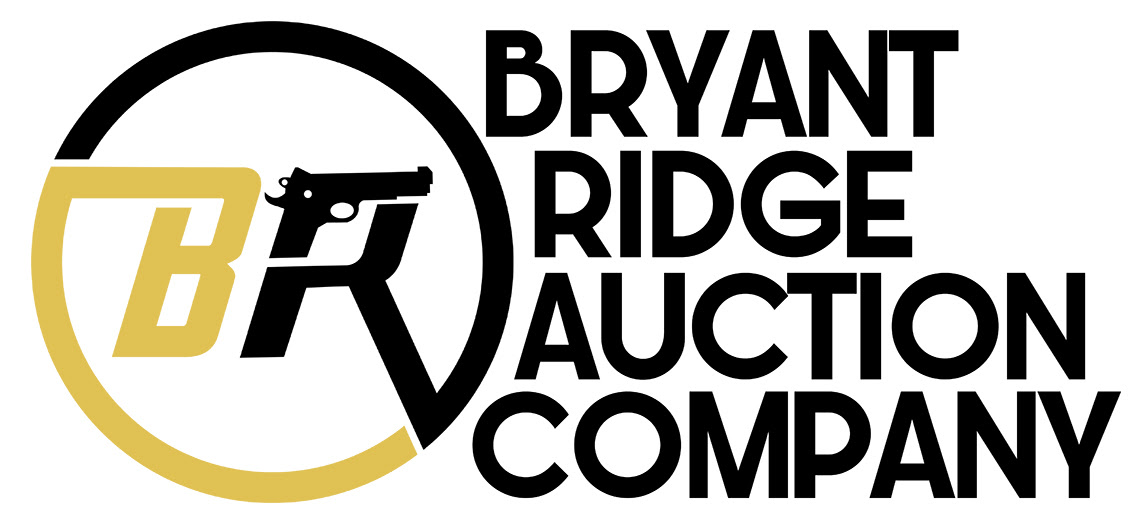Description

Item Description
Bryant Ridge Auction Company is pleased to present this sought-after WWII-era semi-auto pistol today for a penny start auction; this is the Walther P.38!
**This is an example that showcases the AC-43 single-line code**
**This is an example that showcases the AC-43 single-line code**
SPECIFICATIONS:
Manufacturer: Walther (AC Code)
Model: P.38
Serial: 5008M
Date of Manufacture: 1943
Caliber: 9mm
Finish: Blue
Barrel Length: 4.9"
Optics/Sights: Dovetail Blade Front with Fixed U-Notched Rear
Stock/Grips: Brown Bakelite Grips
Action: Semi-Auto
Markings: Standard / Stamped "P.38 / 5008m ac 43" on the left side of the slide. The frame's left side and the slide's right side feature German-proof stamps. There are matching serial numbers on the left side of the frame, the slide, and the barrel underlug.
Bryant Ridge's Analysis:
The Walther P38 (originally written Walther P.38) is a 9 mm semi-automatic pistol that was developed by Carl Walther GmbH as the service pistol of the Wehrmacht at the beginning of World War II. It was intended to replace the comparatively complex and expensive to produce Luger P08. Moving the production lines to the more easily mass-producible P38 once World War II started took longer than expected, leading to the P08 remaining in production until September 1942, and copies remained in service until the end of the war. The Walther P.38 was produced from 1939 to 1945. The pistol was initially developed between 1937 and 1939, resulting in the first Model HP or Heerespistole ("army pistol"), which had several variants as engineering changes were made. The early production of this pistol included a Swedish contract. The designation P.38 indicates Wehrmacht adoption in 1938, although the exact date is unknown. The transition from HP to the mechanically-identical P.38-marked pistols took place between 1939 and 1940. Sweden purchased the Walther HP in 1939.
During World War II, three manufacturers - Walther, Mauser, and Spreewerk - produced the P.38 pistol. In order to keep their identities secret, each manufacturer used a letter code: ac for Walther, byf for Mauser, and cyq for Spreewerk. The code was then followed by the production date (e.g. ac44 for Walther's 1944 production). However, Spreewerk did not mark production dates. Each manufacturer produced pistols in blocks of 10,000, with each block being consecutively numbered and having a letter suffix. This was done to conceal the production volume. In total, 1,277,680 P.38 pistols were produced during WWII, with Walther producing 617,585 in Zella-Mehlis, Mauser producing 372,875 in Oberndorf, and Spreewerk producing 287,220 in Grottau. Late in the war, the cyq die used by Spreewerk broke. As a result, subsequent pistols were marked "cvq" due to the broken die. About 31,400 pistols are marked in this way. Spreewerk's production ended in April 1945.
Return Policy:
We gladly offer a 3 day unfired inspection policy from the time that the firearm is delivered to your FFL. Refunds are available for all qualifying orders.
Model: P.38
Serial: 5008M
Date of Manufacture: 1943
Caliber: 9mm
Finish: Blue
Barrel Length: 4.9"
Optics/Sights: Dovetail Blade Front with Fixed U-Notched Rear
Stock/Grips: Brown Bakelite Grips
Action: Semi-Auto
Markings: Standard / Stamped "P.38 / 5008m ac 43" on the left side of the slide. The frame's left side and the slide's right side feature German-proof stamps. There are matching serial numbers on the left side of the frame, the slide, and the barrel underlug.
Bryant Ridge's Analysis:
The Walther P38 (originally written Walther P.38) is a 9 mm semi-automatic pistol that was developed by Carl Walther GmbH as the service pistol of the Wehrmacht at the beginning of World War II. It was intended to replace the comparatively complex and expensive to produce Luger P08. Moving the production lines to the more easily mass-producible P38 once World War II started took longer than expected, leading to the P08 remaining in production until September 1942, and copies remained in service until the end of the war. The Walther P.38 was produced from 1939 to 1945. The pistol was initially developed between 1937 and 1939, resulting in the first Model HP or Heerespistole ("army pistol"), which had several variants as engineering changes were made. The early production of this pistol included a Swedish contract. The designation P.38 indicates Wehrmacht adoption in 1938, although the exact date is unknown. The transition from HP to the mechanically-identical P.38-marked pistols took place between 1939 and 1940. Sweden purchased the Walther HP in 1939.
During World War II, three manufacturers - Walther, Mauser, and Spreewerk - produced the P.38 pistol. In order to keep their identities secret, each manufacturer used a letter code: ac for Walther, byf for Mauser, and cyq for Spreewerk. The code was then followed by the production date (e.g. ac44 for Walther's 1944 production). However, Spreewerk did not mark production dates. Each manufacturer produced pistols in blocks of 10,000, with each block being consecutively numbered and having a letter suffix. This was done to conceal the production volume. In total, 1,277,680 P.38 pistols were produced during WWII, with Walther producing 617,585 in Zella-Mehlis, Mauser producing 372,875 in Oberndorf, and Spreewerk producing 287,220 in Grottau. Late in the war, the cyq die used by Spreewerk broke. As a result, subsequent pistols were marked "cvq" due to the broken die. About 31,400 pistols are marked in this way. Spreewerk's production ended in April 1945.
Return Policy:
We gladly offer a 3 day unfired inspection policy from the time that the firearm is delivered to your FFL. Refunds are available for all qualifying orders.
Shipping Details
Handgun Standard Shipping $50.00
Long Gun Standard Shipping $70.00
Any orders placed with magazines that are not compliant with your state, county, or city regulations will not ship with your order.
















